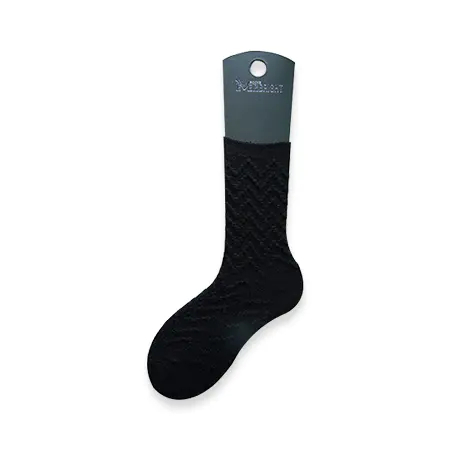1. Preparation before cleaning
First, sort your socks by color, material, and any special stains or tears. Doing this will help avoid color mix-ups during the cleaning process and allow for appropriate cleaning methods for different situations. Check the socks for obvious damage or wear, such as holes, loose threads, etc. For damaged socks, if conditions permit, they can be repaired first to ensure their integrity and extend their service life. Prepare the tools and materials needed to clean socks, including neutral detergent, soft-bristled brush, laundry bag (if necessary), water and clean towels. Make sure the tools and materials are clean and suitable for cleaning socks. Choose a mild and non-irritating neutral detergent, and avoid using detergents containing bleach or strong alkaline ingredients to avoid damage to the fibers of the socks. If your socks have special materials or requirements, you can choose a suitable detergent according to the product instructions. For special stains on socks, such as oil stains, blood stains, etc., they can be pre-treated before cleaning. Apply an appropriate amount of detergent to the stained area, scrub gently, and then rinse with clean water. This can help remove stubborn stains and improve cleaning results. Make sure the cleaning environment is clean and spacious for easy operation. At the same time, keep them well ventilated and avoid humid or enclosed environments, which will help your socks stay dry and clean during the washing process.
2. Cleaning steps
Soaking: Soak the socks in warm water for about 15 minutes. The water temperature should not be too high to avoid damaging the fiber structure of the socks. During the soaking process, you can gently press the socks to fully absorb water, which is beneficial to subsequent cleaning.
Gentle scrubbing: Use neutral detergent to scrub the socks gently, being careful not to use too much force to avoid damaging the texture of the socks. For stains that are difficult to clean, you can use a soft-bristled brush to gently scrub, but avoid excessive friction between the brush and the surface of the socks.
Rinse: Rinse the socks with plenty of water to make sure all the detergent is rinsed away. During the flushing process, the clean water can be replaced several times until the flushed water becomes clear.
Dehydration: Gently squeeze the clean socks to remove excess water. Be careful not to wring it too hard to avoid damaging the shape and elasticity of the socks.
3. Drying and preservation
Drying: Dry the dehydrated socks in a well-ventilated place away from direct sunlight. Ultraviolet rays from the sun can adversely affect the color and texture of your socks. Also, avoid using a dryer to avoid shortening the life of your socks.
Storage: Dry socks should be stored in a dry, ventilated and dark place to prevent moisture and sunlight from causing damage to the socks. You can fold the socks neatly and put them in a storage box or drawer to avoid contact with sharp objects to avoid scratches.
4. Regular care and maintenance
Deodorize: For odors caused by long-term wear, you can use some natural deodorants, such as baking soda or white vinegar, and soak socks in a solution containing these ingredients to help remove odors.
Elastic recovery: As time goes by, the elasticity of socks may gradually weaken. To restore the elasticity of your socks, try treating them with a specialized fabric softener or gently stretching various parts of your socks before drying them.
Inspection and repair: Check the socks regularly for damage or wear. Once damage or wear is found, repair or replace it in time. When repairing, you can use sewing thread that is similar to the color of the socks to maintain the integrity and beauty of the socks.


 English
English 简体中文
简体中文 CN
CN

